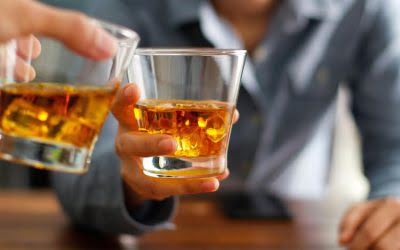Practical implementation of PTC for ether formation requires careful optimization. Start by ensuring complete phase separation before adding the catalyst, as incomplete separation can lead to inefficient transport. Post-reaction, the phases are separated, and the organic layer is washed with water to remove residual catalyst and byproducts. The ether product is then isolated via distillation or column chromatography. Consider the Williamson ether synthesis, a common method for ether formation.

Dehydration Symptoms Post-Drinking: Headaches, fatigue, and dry mouth often result from alcohol-induced dehydration
Age, weight, and tolerance matter, but vital signs remain the universal indicators of distress. Unlike fever or dehydration, which develop gradually, alcohol’s effects on breathing, heart rate, and temperature can manifest within minutes, demanding constant vigilance. Hypothermia lurks in the shadows does alcohol make you dehydrated of alcohol intoxication, as the body’s temperature regulation falters.
The Primary Culprit: Dehydration
This position also maintains an open airway, reducing the risk of aspiration pneumonia or suffocation. Most people think of dehydration as simply feeling thirsty, but the truth is, its effects can reach far deeper into the body. Beyond a dry mouth and fatigue, dehydration can affect your digestion, blood pressure, and even your brain, sometimes leaving you feeling dizzy or nauseated without realizing why.
Symptoms of Dehydration from Alcohol

Cardiovascular health is also at risk, with increased chances of developing high blood https://ecosoberhouse.com/ pressure, heart disease, and stroke. Moreover, alcohol can irritate the stomach lining, leading to gastritis and potentially causing stomach ulcers over time. For many, nausea seems to appear out of nowhere on a hot day, during an intense workout, or even after a mild illness. Patients often arrive feeling queasy and lightheaded, only to learn that dehydration was the hidden cause.
- If you need painkillers, ibuprofen the next morning with plenty of food and water is a better option.
- Physically, you might lose weight as alcohol is high in calories and can trigger overeating.

Chlordiazepoxide, another what is alcoholism long-acting option, is frequently used in fixed-dose regimens, such as 50 mg every 6 hours, tapering over 7–10 days. The choice of benzodiazepine depends on patient-specific factors, such as liver function, age, and the severity of withdrawal symptoms. While a glass of wine or a cocktail might be a social staple, the subsequent increase in urine production can lead to dehydration, leaving your lips parched. This is because alcohol inhibits the release of vasopressin, a hormone that regulates fluid retention.
- Prompt recognition of severe symptoms and immediate access to medical care can significantly improve outcomes and save lives.
- Combine these strategies, and you can actually enjoy your night out without totally writing off your next day.
- This process is why alcohol is known as a diuretic—it makes you pee more.
- If we’re experiencing any of these after excessive alcohol consumption, we could have alcohol dehydration, which can result in serious health consequences.
Skin color and temperature provide visual clues to circulation and overall health. Pale, clammy skin may indicate shock or poor blood flow, while bluish discoloration (cyanosis) suggests oxygen deprivation. Check extremities like fingertips and toes, as they often show changes first. Keep the person warm but avoid overheating, as alcohol impairs temperature regulation. Dehydration reduces blood flow and triggers temperature imbalance, which can intensify both nausea and headache symptoms.
- It’s important to respond to these signs promptly, especially in environments where alcohol is consumed, to maintain optimal health and well-being.
- For those over 65 or with pre-existing health conditions, caution is advised, as dehydration risks are heightened due to reduced kidney function and medication interactions.
- It’s best to wait until you have fully recovered and are no longer taking any medications.
- Drinking plenty of water may help prevent and relieve constipation, especially in people who generally don’t drink enough water.
- It is important to note that medications can cause side effects that make the hangover worse, and possibly dangerous.
During Alcohol Consumption
A safe rule of thumb is to keep the activity level at 50–60% of your maximum effort, ensuring you can maintain a conversation without strain. Light physical activity can significantly accelerate the body’s ability to metabolize alcohol, but the effectiveness hinges on timing, intensity, and individual factors. However, exercising immediately after drinking may exacerbate dehydration and dizziness, so moderation is key. For instance, a 30-minute walk at a moderate pace can elevate heart rate enough to enhance metabolic processes without overstressing the system. The body’s response to alcohol is a complex, systemic event, not just a simple matter of getting intoxicated. For more detailed information on the health impacts of alcohol, consult resources like the National Institute on Alcohol Abuse and Alcoholism (NIAAA).
